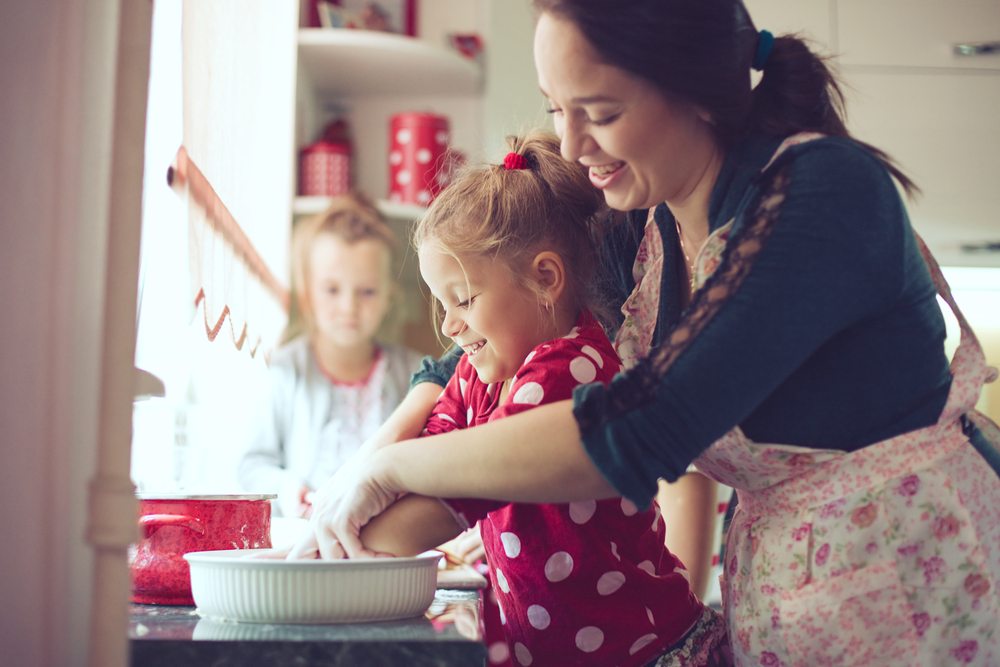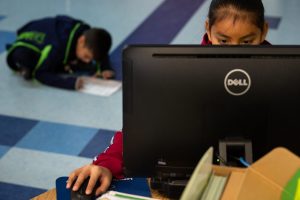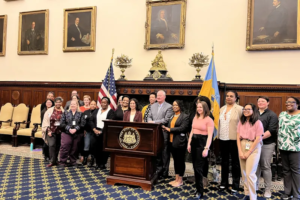America’s essential workers are in the midst of a child-care crisis.
The combination of remote schooling, reduced child-care options, and a “reopened” economy leaves millions of American parents who work outside the home with an impossible choice. They can put their job at risk by staying home. (Some 74,000 Americans who had a job but were taking time off cited “childcare problems” for their absence during a sample week in July—more than twice the typical average, according to data from the Bureau of Labor Statistics.) They can send their children to in-school day camps that may be unaffordable—and potentially just as virus-prone as regular schools. They can leave their kids with vulnerable relatives. Or they can leave their children home alone.
Some parents are already being forced to let their kids fend for themselves, news reports suggest. The Los Angeles Times reported on the story of one mother who is leaving her first grader home alone and asking a neighbor to check in on the child “from time to time.” A single mom in Oxnard, California, set up a webcam to monitor her teenage son while she works in the strawberry fields. In New York, a 22-year-old is leading her special-needs brother through online education.
Although some parents have jobs that allow them to work remotely and keep half an eye on their kids, more than 40 percent of working Americans have to leave home for their job. Not all of those who are parents can simply send their children to day care or hire a nanny. Many child-care providers have shut their doors because of the pandemic, and private child care is expensive, at more than $700 a month for preschoolers on average. In some areas, child care has grown even more expensive as federal aid for child-care funding has expired. The cost is a huge burden for many essential workers, including cashiers, who make $2,000 a month on average; fast-food workers, who make $1,937; and meatpackers, who make $2,460. Many workers—women, in particular—are leaving their jobs because they cannot find affordable child care.
Beyond the CARES Act, the federal government has not stepped in, and many states have no clear plan to help parents. Over the past two weeks, we asked each of the 46 states that have embraced at least some form of virtual learning whether they offer free child care for people who can’t work from home, and if so, how many children they can accommodate. As of publication, representatives from 30 states had responded. Just five said they had free child care available—and 15 told us that they had no free child care available for parents who can’t work remotely.
In the remaining states, some subsidies are available for child care, but there might not be enough openings for all the kids who need them, and the subsidies may not cover the total cost of child care. Some public schools are opening virtual-learning day camps, where children report to a school building and spend all day on Zoom. These have enraged some parents, who don’t see why they should pay for their child to sit in front of a computer all day. And some states are openly encouraging parents to find family members willing to shoulder the child-care burden.
States “figured it out just a little bit too late,” says Linda Smith, the director of the Bipartisan Policy Center’s Early Childhood Initiative. “The schools decided what they’re going to do, and the parents are in a panic.”
Family members are the most common solution for parents seeking child care during the pandemic, according to a recent poll from Morning Consult and the Bipartisan Policy Center. Among those family members, grandparents are the most popular choice, says Katie Hamm, the vice president of early-childhood policy at the Center for American Progress, a liberal think tank. But older people are at high risk for complications and death from COVID-19. Kids whose schools closed so they wouldn’t spread the coronavirus might be spreading it to their grandparents instead.
Some states are formalizing the idea that grandparents are responsible for child care. Oklahoma created Kith.care, an app through which the state pays the relatives of essential workers for watching their kids. Of course, problems might arise when the relatives also have jobs.
Perhaps the most puzzling option, at least for parents, has been the opening of day camps in public schools and other spaces. In addition to public schools, 28 states and the District of Columbia now have YMCAs that operate virtual-learning labs for small cohorts of school-age kids.
These labs and camps operate very much like schools. Kids come in wearing masks, work all day on a computer, and then do an enrichment activity before returning home. To reduce the risk of infection, they don’t intermingle with other cohorts or eat in cafeterias. But there is a twist: Parents pay for this privilege. Judging by local news stories, the rate is about $100 to $200 a week.
Derrik Coulter, a 40-year-old single father near Spokane, Washington, recently found out that if he wanted someone to supervise his 5-year-old while the boy Zoomed into online classes, his best option was to drop his son off at the local YMCA—for a fee that would stretch his budget.
Coulter doesn’t want his son attending a glorified kid-cubicle farm. Rather than pay for the YMCA, Coulter plans to wake up at 7 a.m., supervise his son’s online schooling, then leave his son in the care of a cousin while he goes to his job as a metalworker. He’ll return home at midnight, having spent no nonschool time with his son. “If you want your kid to go to school, you have to pay,” Coulter told us. “And they’re saying that’s safe. But to just go to regular school is unsafe?”
Schools say they have to charge these fees because they’re relying on extra staff to supervise the camps. (Regular teachers are teaching online.) Adam Swinyard, the superintendent of Spokane Public Schools, told us that the district is holding day camp for students at $25 a day, and that scholarships are available for those who can’t afford it. To parents who ask, “Why not just open schools, then?,” he said that in terms of COVID-19 safety, “there’s a substantive difference between having 600 kids in an elementary school and having 50 to 100 kids.”
But many parents are nevertheless mystified that they’re being charged for what looks an awful lot like public school—and sometimes even takes place at one. “So if I have the money, then I can get extra supervised help for my child, but if I don’t, I don’t get that extra help—that’s odd to me,” Heather Kosloske, a mother in eastern Wisconsin, told a local news station. Some parents are so incensed by this that they have joined a lawsuit against California brought by the Center for American Liberty, a conservative legal group, seeking to reopen schools.
More than half of the respondents to the Morning Consult/BPC poll said they would be “very or somewhat comfortable” sending their kids back to elementary school, and three-quarters said they would be unwilling or unable to pay for a separate child-care program. The YMCA told us that while its virtual-learning labs offer financial assistance and “in some cases” offer free slots, “Y’s desperately need more from our government in order to continue to respond the way we have.”
The federal government did, at one point, throw some money at the child-care problem. The CARES Act gave states $3.5 billion for child care. But according to Hamm, that wasn’t even enough to cover child care for a month for health-care workers only. Many states told us that this money has run dry, and they are now awaiting new federal funds that may not come. And Alaska, Colorado, Delaware, Idaho, New Mexico, North Carolina, North Dakota, Oklahoma, Oregon, Rhode Island, South Carolina, Utah, Virginia, Washington, and Wyoming told us they have no free child care for parents who can not work from home.
Even in some of the states currently subsidizing child care, workers have to be very poor to qualify for help. And the co-pay, which could be hundreds of dollars a month, might still be too much for some families because many of the companies that were giving frontline workers “hazard pay” earlier in the pandemic have since stopped. For example, in Georgia, child care for essential workers is subsidized, but there are far from enough slots to accommodate all the state’s children, and families making more than $1,214 a year still have to pay a fee for child care. (Some states, such as Mississippi, have either waived those co-pays or created programs to cover them.)
Because of these hurdles, some parents are likely leaving their kids unattended. (Child advocates call this “self-care,” in a dark twist on the Millennial relaxation trend.) “We spend a lot of time in this country trying to deal with [parents] leaving children in self-care too early,” Smith says. “And I think this is going to be a big backtrack.”
Though there are no strong data on the number of parents leaving their children home alone—likely because parents who are forced to leave their kids unattended are loath to admit it—a fair amount did so even before the pandemic, Gina Adams, a senior fellow at the Urban Institute, a think tank based in Washington, D.C., told us. “There’s literally often no place for them to go,” she said. “So, if you have an 8- or 9-year-old who you would trust, or even if you don’t, I can’t imagine there aren’t parents doing that—and feeling terrible about it at every moment, and being very, very worried.”
Some states told us that they don’t track cases of children left unsupervised. Sadly, one of the only ways to judge the scale of the problem will be to monitor how many children die of abuse or neglect this year. That number is usually about 1,700. But with so many parents stuck without child care, many more might leave children at home all day with little more than a locked door for protection. Young children don’t appear to spread the virus as much as adults do. But their health, and their lives, are still at risk from America’s failure to contain COVID-19.




